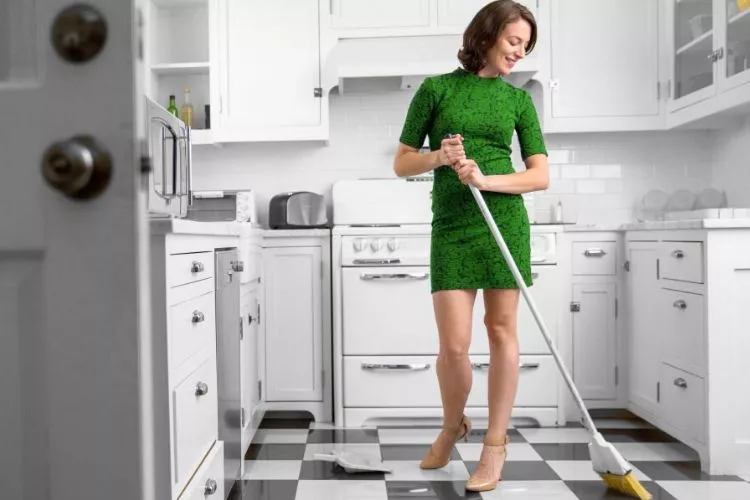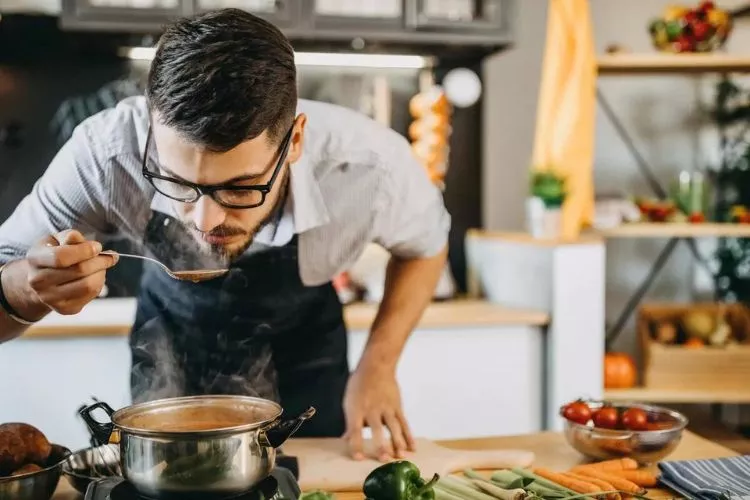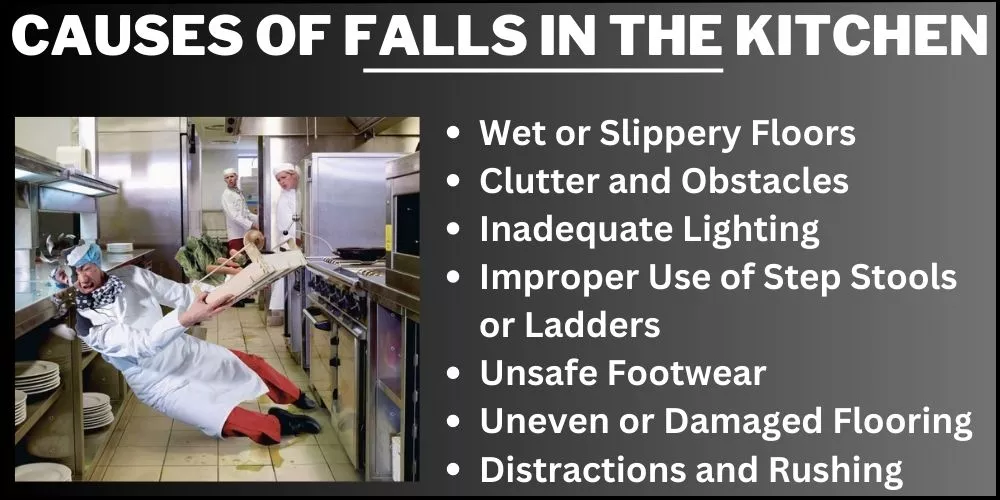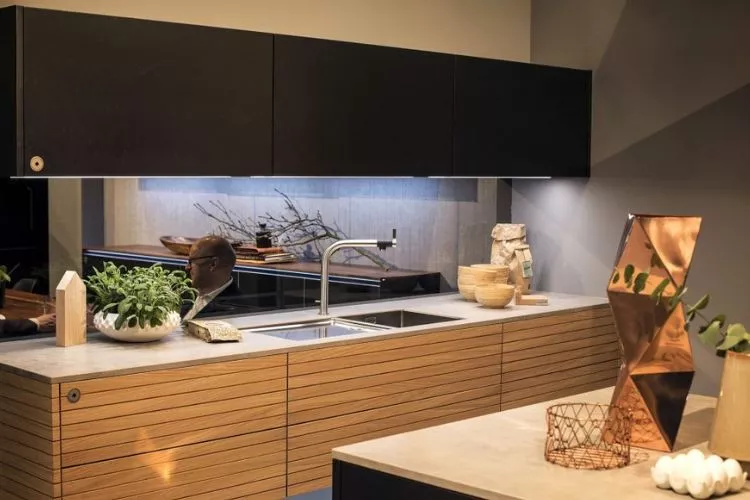Did you know that falls are the number one cause of injury-related hospitalizations among older adults?
Have you ever slipped on a wet kitchen floor or tripped over cluttered countertops? I know I have.
Falls in the kitchen are a leading cause of these injuries, and it’s crucial to know how to prevent falls in the kitchen in order to keep ourselves and our loved ones safe.
I will examine the most common causes of kitchen falls, such as wet floors, cluttered countertops, and improper use of step stools.
We’ll provide practical tips for preventing falls, like wearing non-slip shoes, organizing your kitchen space, and using step stools safely.

Additionally, we’ll share resources for more information on fall prevention.
How to Prevent Falls in the Kitchen? (Multiple Ways Discussed)
Falls in the kitchen can lead to serious injuries. Taking some simple precautions and making a few changes to your kitchen environment can greatly reduce the risk of falls. Here’s how to prevent falls in the kitchen:
Keep Floors Cle b an and Dry
Wipe up spills immediately: Wet floors can be very slippery. Clean up any spills as soon as they happen to prevent accidents.

Use non-slip mats: Place non-slip mats in areas where spills are likely to occur, such as near the sink, dishwasher, and stove.
Organize Your Kitchen
Declutter countertops: Keep your countertops clear of unnecessary items and appliances. This will not only make your kitchen look cleaner but also reduce the risk of tripping over items left on the counter.
Store frequently used items within easy reach: Place items you use often on lower shelves or in easily accessible cabinets. This will help you avoid overreaching or using unstable objects to access items.
Use Step Stools Safely
Choose the right step stool: Use a sturdy, non-slip step stool with handrails for added stability when reaching for items stored on high shelves.
Avoid using chairs or other unstable objects: Do not use chairs or objects not designed for climbing, as they can easily tip over and cause falls.
Wear Proper Footwear
Choose non-slip shoes: Wear shoes with non-slip soles to prevent slipping on wet or greasy floors. Avoid wearing socks or slippers, which can be slippery on certain surfaces.

Install Proper Lighting
Ensure adequate lighting: Ensure your kitchen is well-lit, especially in areas where you prepare food and walk frequently. Consider adding under-cabinet lighting or motion-sensor lights to improve visibility.
Keep Electrical Cords Out of the Way
Secure loose cords: Tuck away or secure any electrical cords from appliances to prevent tripping. Avoid running cords across walkways or other high-traffic areas.
Practice Safe Cooking Habits
Turn pot handles inward: Turn them inward when cooking on the stove to prevent accidentally knocking them over and causing spills or burns.
Use oven mitts and potholders: Always use oven mitts or potholders when handling hot pots, pans, or baking sheets to avoid burns and spills.
By following these tips and consciously maintaining a safe kitchen environment, you can greatly reduce the risk of falls and keep yourself and your family safe.
Other Prevention Methods
Install grab bars: Installing grab bars near the sink, stove, and other areas where you frequently stand can provide extra support and help maintain balance while performing tasks in the kitchen.
Adjust the height of countertops and cabinets: Ensuring that countertops and cabinets are at an appropriate height can help reduce the need for overreaching or bending, which may lead to falls.

Use contrasting colors: Using contrasting colors for countertops, floors, and cabinets can help improve visibility and make it easier to identify potential hazards.
Create a safe cooking zone: Designate a specific area in the kitchen for cooking and food preparation, and keep it clear of any obstacles or clutter.
Schedule regular maintenance: Regularly inspect and maintain appliances, flooring, and other kitchen elements to ensure they remain in good condition and do not pose a fall risk.
Causes of falls in the kitchen
Understanding the causes of falls in the kitchen can help you take the necessary precautions to prevent accidents. Here are some common factors that contribute to falls in the kitchen:

Wet or Slippery Floors
Spills: Liquid spills, such as water, oil, or grease, can create slippery surfaces that increase the risk of falls.
Cleaning products: Some cleaning products can leave a slippery residue on the floor, making it more difficult to maintain traction.
Clutter and Obstacles
Countertop clutter: Overloaded countertops with appliances, dishes, or other items can lead to accidents if items fall or are knocked over.
Loose items on the floor: Objects left on the floor, such as bags, boxes, or kitchen tools, can create tripping hazards.
Inadequate Lighting
Poor visibility: Insufficient lighting in the kitchen, especially in areas where you prepare food and walk frequently, can make it difficult to see potential hazards.
Glare: Excessive glare from windows or lighting fixtures can also impair visibility and increase the risk of falls.

Improper Use of Step Stools or Ladders
Unstable or inappropriate climbing tools: Using chairs, boxes, or other unstable objects instead of a proper step stool or ladder can lead to falls.
Overreaching: Trying to reach items on high shelves without proper support or overextending your reach can cause you to lose balance and fall.
Unsafe Footwear
Slippery shoes or socks: Wearing shoes with slippery soles or walking in socks can increase the risk of slipping on kitchen floors.
Uneven or Damaged Flooring
Cracked or loose tiles: Damaged flooring can create tripping hazards and increase the risk of falls.
Uneven surfaces: Changes in floor levels, such as transitions between different types of flooring, can also pose a risk of tripping.

Distractions and Rushing
Multitasking: Trying to juggle multiple tasks simultaneously can lead to accidents, as your attention may be divided, and you may not notice potential hazards.
Rushing: Hurrying through kitchen tasks can increase the likelihood of making mistakes, such as spilling liquids or knocking items over.
By being aware of these common causes of falls in the kitchen, you can take steps to address them and create a safer environment for yourself and your family.
frequently asked questions (fAQs)
What are 4 ways to prevent falls in the kitchen?
To prevent falls in the kitchen, you can 1) keep floors clean and dry by wiping up spills immediately and using non-slip mats; 2) organize your kitchen by decluttering countertops and storing frequently used items within easy reach; 3) use step stools safely by choosing a sturdy, non-slip stool with handrails; and 4) wear proper footwear, such as non-slip shoes, to maintain traction on potentially slippery surfaces.
What are 5 ways to prevent falls?
Five ways to prevent falls include:
Removing tripping hazards like clutter and loose cords.
Installing proper lighting to improve visibility.
Using grab bars or handrails for added support in high-risk areas.
Wearing non-slip footwear.
Participating in regular physical activity to maintain strength, balance, and flexibility.
What are at least 2 common causes of slips or falls in the kitchen?
Two common causes of slips or falls in the kitchen are wet or slippery floors due to spills or cleaning products and clutter or obstacles on countertops and floors, which can create tripping hazards.
What are the most effective ways to prevent slips, trips, and falls in the kitchen?
The most effective ways to prevent slips, trips, and falls in the kitchen include:
Maintaining clean and dry floors.
Organizing the kitchen to minimize clutter and obstacles.
Using proper footwear and step stools.
Installing adequate lighting.
Addressing any damaged or uneven flooring.
Conclusion:
Preventing falls in the kitchen is essential for ensuring the safety and well-being of individuals and their families.
By implementing practical measures such as maintaining clean and dry floors, organizing the kitchen, using proper footwear and step stools, installing adequate lighting, and addressing any damaged or uneven flooring, the risk of falls can be significantly reduced.
Additionally, fostering a proactive approach to fall prevention through education, awareness, and collaboration with healthcare providers and community organizations can further enhance the safety of our kitchens.
By taking these steps, we can create a safer environment for everyone and minimize the risk of accidents and injuries in one of our homes’ most frequently used areas.


